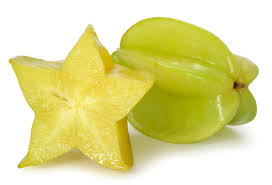It occurred to me yesterday morning that it may appear to some that I overreacted to last week’s yogurt scarcity.
Recall, however, that I did identify the event as “another one of those Final Straws,” and that this sort of thing happens to me with “disturbing and irritating frequency.” Also please note that I am fully aware my favorite yogurt has not been discontinued altogether; it’s just that our local Safeway no longer stocks it, either temporarily or permanently. Just wanted to get that straight.
To illustrate this disturbing trend, following is an abbreviated list of products upon which I–and, to a lesser extent, my husband–had become very dependent, only to experience the repeated pain of their disappearance from the marketplace one by one:
• Aziza eyeliner pencils (the earliest product discontinuation trauma I can remember)
• Simply Organic Grilling Seasons marinade mix (the best marinades we’ve ever tasted–what the hell happened, Simply Organic?)
• Trader Joe’s unsweetened powdered chai mix (some people like to control the amount of sugar in their beverages)
• Burt’s Bees Bay Rum After Shave Balm (made hubby smell delicious and gave him a soft face–what’s so wrong about that?)
• Lily of the Desert Aloe 80 Clarifying Facial Scrub (are we the only ones who like scrubby facial cleansers?)
• Safeway’s O brand organic peach/mango fruit-on-the-bottom yogurt (seriously, am I the only person in the country that thought this was the best flavor ever?)
• Patagonia stainless steel travel mug (husband temporarily “lost” his [read “left at friend’s house in Seattle”], so loving wife tried in vain to find him a new one online)
• Star fruit (I haven’t seen one in the produce section in years–have they gone extinct?)
• OXO Good Grips Soap-Dispensing Stemware and Glass Wand threaded refills (who knew our dish wand would far outlast the availability of the exact sponge refills needed to make it work?)
Look–here are refills available for purchase online:
Don’t be fooled: these refills are NOT THREADED. They snap in to an OXO Good Grips Soap-Dispensing Stemware and Glass Wand identical to ours in every way but one.
And don’t even get me started on my favorite TV series that have gone by the wayside in (relatively) recent years:
• Seinfeld
• Queer Eye For the Straight Guy
• Most Haunted
• UFO Hunters
• 30 Rock
At least The Simpsons is still going strong after 24 seasons. Yaaaaaaay Matt Groening! Yaay … uh … FOX? … Er, never mind.
Anyway, you may be wondering what kind of profound truths I have gleaned over the years from these recurring disappointments. I’m one of those people who reads meaning into literally every seemingly coincidental object or event with which I come into contact. For example, puppy and I were walking this morning, and I saw a squirrel use a crosswalk. Really. It was absolutely extraordinary, and I had to stop and take a moment to ponder the meaning of our timing such that we were privy to this singular phenomenon.
I interpret all these seemingly random product discontinuations as a message to be more
See how I made the word look like what it means? I don’t care what those snooty graphic designers say: it’s amazing what you can do with Microsoft Publisher.
The sad (and odd) thing is that the older I get, the less flexible I feel. Yoga definitely helps with the physical flexibility, but I need to do some real work on the other kind. A former yoga instructor used to say, “Flexible spine, flexible mind.” Does physical flexibility, then, lead to mental flexibility? Not necessarily.
What does it mean to be flexible? I find that I sometimes learn more about the meaning of a word if I take a look at its antonyms. So, what’s the opposite of flexible?
• rigid
• obstinate
• unaccommodating
• unadaptable
• unbendable
• stern
Ew. That was easy. I don’t want to be any of those words. These words sound much nicer:
• soft
• springy
• stretchy
• adjustable
• limber
• willowy
I’ve been sitting here trying to come up with a nice, neat conclusion to wrap up this post, but I just realized that through the process of writing it, I’ve come to understand another small part of my life–which is the whole point of this blog anyway–and I don’t really feel like I need to provide a nice, neat conclusion to wrap it up. I hope you’re okay with that.
This blog is like my online mat space and yoga practice: it’s by, for and about me. If, by chance, there are others of you who spend an enormous amount of mental and spiritual energy questioning
E V E R Y T H I N G ,
maybe you’ll identify with these posts. I hope so, anyway.
[Afterword: I just Googled “starfruit” in an attempt to find out why I haven’t seen them in the produce section for quite some time. Look what Snopes.com has to say about a 2008 e-mail warning about the fruit:
The item quoted above, typically titled “Star Fruit Can Kill,” has been circulating on the Internet since at least May 2008. The original author is unknown to us, but the piece draws its information from April 2008 news reports surrounding the death of Tang Gon Sean, a 66-year-old Malaysian man Star fruit who on 29 March 2008 passed out after eating star fruits, was taken to Shenzhen General Hospital, and subsequently expired there after falling into a coma. Ten other patients at that same hospital experienced symptoms similar to his, and two died, said Tan Si-Yen, the doctor quoted in those news reports. All had eaten star fruit.
Relatively little known in North America, star fruit is popular in China, Taiwan, India, Philippines, Australia, Central America, Africa, and Brazil. While this foodstuff’s proper name is carambola, it is more commonly called “star fruit” because of its shape, which causes slices taken from it to resemble stars. It has a sweet, mild taste somewhat akin to a cross between apple and lime, and is rich in antioxidants and vitamin C. It also has the potential to harm kidney patients.
Star fruit contains a neurotoxin that affects the brain and nerves but which people with healthy kidneys are able to filter out; it therefore poses no danger to those whose kidneys function normally. However, those with renal problems lack protection from that neurotoxin and thus risk “star fruit intoxication,” a condition that manifests with insomnia, hiccups, vomiting, numbness of limbs, decreased muscle power, twitching of muscles, confusion, and convulsions, with the time between ingestion and onset of symptoms varying from thirty minutes to fourteen hours. Intractable hiccups are often the first symptom to present itself.
While the majority of those hospitalized for star fruit intoxication do recover, some deaths have been associated with this condition. Star fruit-exacerbated complications in kidney patients are rare, but they are potentially fatal, and thus this fruit is best avoided by those with kidney problems, including those on dialysis. Indeed, dialysis is the only treatment known to be effective in treating this illness, yet it must be both daily and intensive to have the desired effect, and continuous dialysis has been recommended for severe cases.
The National Kidney Foundation (NKF) advises in its Dietary Guidelines for Adults Starting on Hemodialysis: “Always AVOID star fruit (carambola).”
Information about the interaction of renal patients and star fruit did not first surface in April 2008; medical literature has been documenting reports of and studies about the star fruit’s effect on kidney patients at least since 2000, with such findings subsequently reported by the general media.
Barbara “star report” Mikkelson
Last updated: 11 June 2009
WTF? Intractable hiccups? Convulsions? DEATH???!!! I’ve never been so thankful to have a perfectly-functioning set of kidneys in my life.





